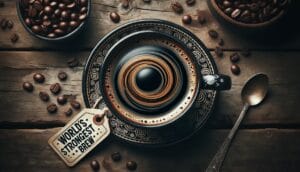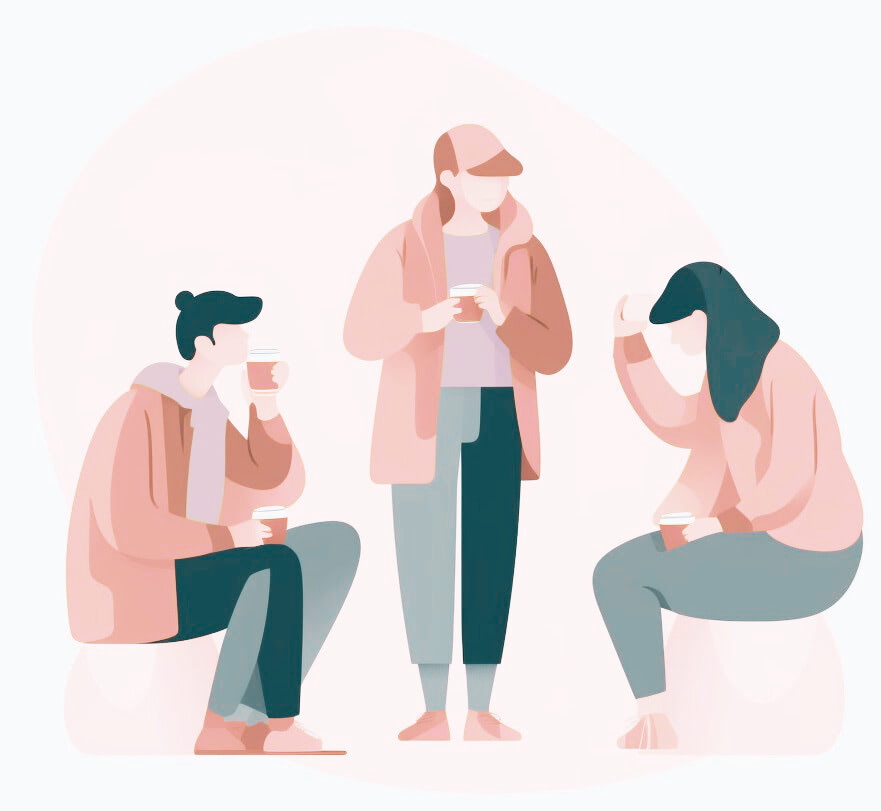Which Coffee Roast Has More Caffeine?
When measured by volume, lighter roasts typically have more caffeine than medium and dark roasts due to their shorter exposure to heat.
When measured by weight, the differences become miniscule.
To understand why this is, we first need to know what roasting is.
Key Takeaways
- Coffee roasting changes the flavor and aroma of raw beans.
- Roasting has minimal impact on caffeine content per individual bean.
- Measuring by volume, light roast has slightly more caffeine due to density.
- Bean variety and brewing method are the biggest factors in caffeine content.
What is Coffee Roasting?
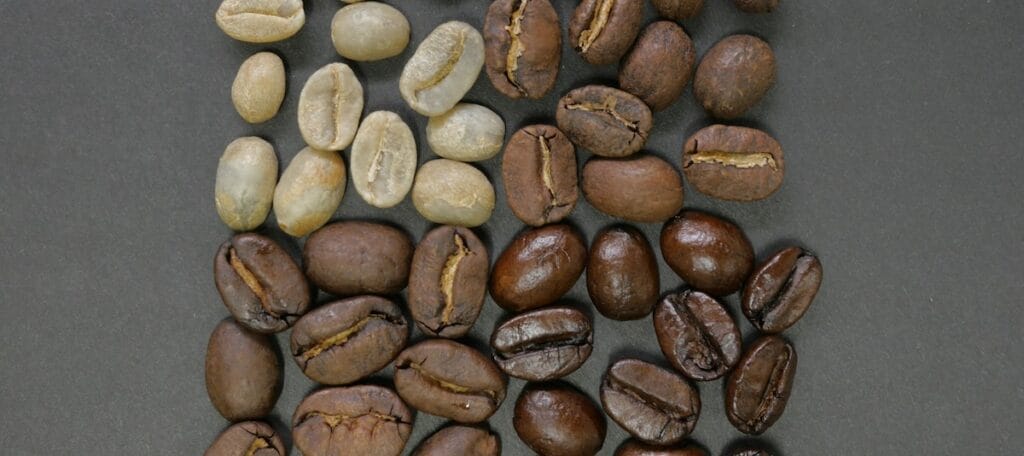
Coffee roasting is the process that transforms green/raw coffee beans into the aromatic brown beans we know.
It changes the bean’s chemical structure, bringing out its unique flavor and aroma.
You’re here to know which type of roast has more caffeine. We’ll get to that. But there’s a bit of information you should know beforehand.
Here are the steps of coffee roasting [1]:
- Loading: Roaster adds green coffee beans to the roasting machine.
- Drying: Machine heats beans for 6–8 minutes to remove moisture (temperatures are around 320 °F/160 °C).
- First crack: Beans crackle as moisture escapes, signaling the start of roasting (385 °F / 196 °C).
- Browning: Sugars caramelize, causing color change and aroma development (up to 473 °F / 240 °C).
- Second crack: Louder crack indicates internal bean expansion (up to 450 °F / 232 °C).
- Development: Roast reaches desired color and flavor profile (determined by roast time and temperature).
- Cooling: Beans are rapidly cooled to stop the roasting process and lock in flavors.
Think of coffee roasting like baking a cake. The raw ingredients don’t have the same rich flavor as the final baked cake. Roasting works similarly.
There’s A LOT more to this than what I explained. But what I wrote should give you an understanding of how it works.
How does this affect caffeine content, though?
Does Coffee Roasting Affect Caffeine Content?
While the roast level changes the flavor of coffee, it has minimal impact on the caffeine content within a single bean.
Join our newsletter
Watching your caffeine intake? Get the latest brews and caffeine news.During roasting, beans lose water and expand, affecting their density. This change means that if you measure coffee by volume (scoops), light roast will have more caffeine since the beans are denser.
However:
If you measure coffee by weight (grams), the difference in caffeine between light and dark roasts becomes negligible.
Here’s what’ll actually affect the caffeine in your drink:
- Bean variety: Robusta beans boast higher caffeine than Arabica.
- Altitude: High-altitude beans (grown in areas like the Andes Mountains) often possess lower caffeine levels. [2]
- Brewing method: Methods with longer extraction times (e.g., cold brew concentrate) will produce higher caffeine content than quick methods (like espresso).
- Grind size: A finer grind exposes more surface area, increasing caffeine extraction and boosting the dose in your cup.
- Water temperature: Hotter water extracts more caffeine compared to cooler water.
- Serving size: A larger serving of coffee (say, 12 ounces vs. 6 ounces) will contain more caffeine.
- Coffee quality: Stale beans can lose some caffeine over time.
- Barista skill: Grind size, brewing method, and brew ratio (coffee-to-water) will impact caffeine content.
This probably isn’t the answer you hoped for, but it’s vital information as we transition into the next section.
Dark Roast vs. Medium Roast vs. Light Roast
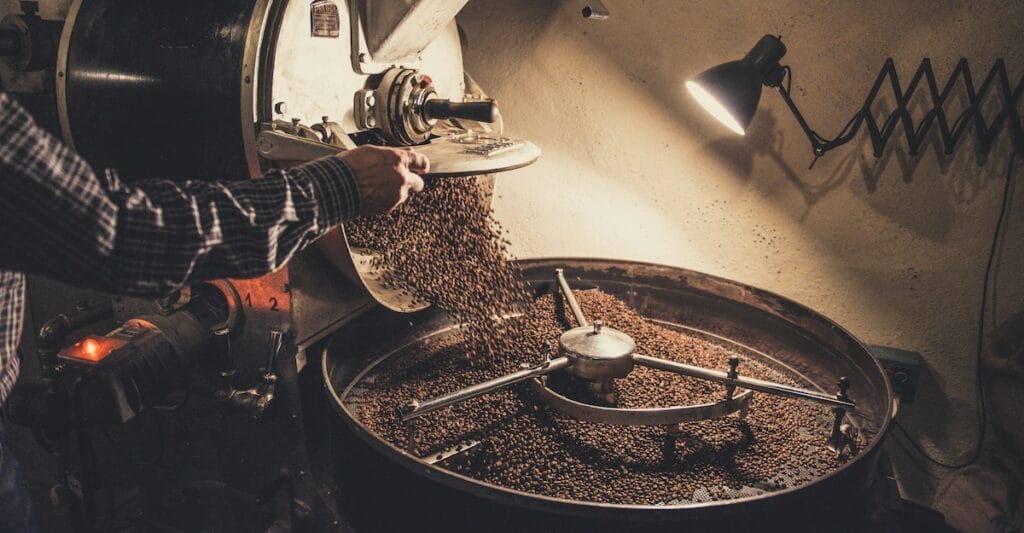
Here’s what you came for:
| Roast Level | Coffee Bean Variety | Caffeine (per scoop) | Caffeine (per gram*) |
| Light Roast | Arabica | 15–25 mg | 3–5 mg |
| Light Roast | Robusta | 25–50 mg | 5–10 mg |
| Medium Roast | Arabica | 12–20 mg | 3–5 mg |
| Medium Roast | Robusta | 20–40 mg | 5–10 mg |
| Dark Roast | Arabica | 10–18 mg | 3–5 mg |
| Dark Roast | Robusta | 18–35 mg | 5–10 mg |
*Assuming an average bean weight of 0.1 grams.
The almighty table suggests that lightly roasted Robusta beans—when measured by scoop—have more caffeine than their medium- and dark-roasted counterparts.
For the sake of thoroughness, we need to investigate different roast subcategories to see whether there are differences in caffeine.
Here we go…
Light Roast:
| Roast Type | Roasting Temperature | Caffeine Differences? |
| Cinnamon Roast | 196 °C / 384 °F | Miniscule |
| New England Roast | 205 °C / 401 °F | Miniscule |
Medium Roast:
| Roast Type | Roasting Temperature | Caffeine Differences? |
| City Roast | 205 °C / 401 °F | Miniscule |
| American Roast | 210 °C / 410 °F | Miniscule |
Dark Roast:
| Roast Type | Roasting Temperature | Caffeine Differences? |
| Full City Roast | 225 °C / 437 °F | Slight potential decrease in caffeine compared to medium roasts. |
| Vienna Roast | 230 °C / 446 °F | Possibly a tinge lower in caffeine than Full City. |
| French Roast | 240 °C / 464 °F | Potential for further decrease in caffeine compared to Vienna. |
| Italian Roast | 245 °C / 473 °F | Likely to have the least caffeine content among these dark roasts |
With darker roasts, beans spend more time at higher temperatures. Gradual caffeine degradation becomes more likely as you move from Full City to Italian roast.
I’d love to provide quantitative information for all of the different roast types. However, the table at the beginning of this section is more relevant and less confusing.
Most of the differences you’ll notice among these roast variations is the taste, oil versus lack thereof, acidity, and color. Otherwise, as I’ve repeated, the caffeine level differences mostly vary by bean type.
And brewing method.
Caffeine Content in Different Roast Types Depending on Brewing Method
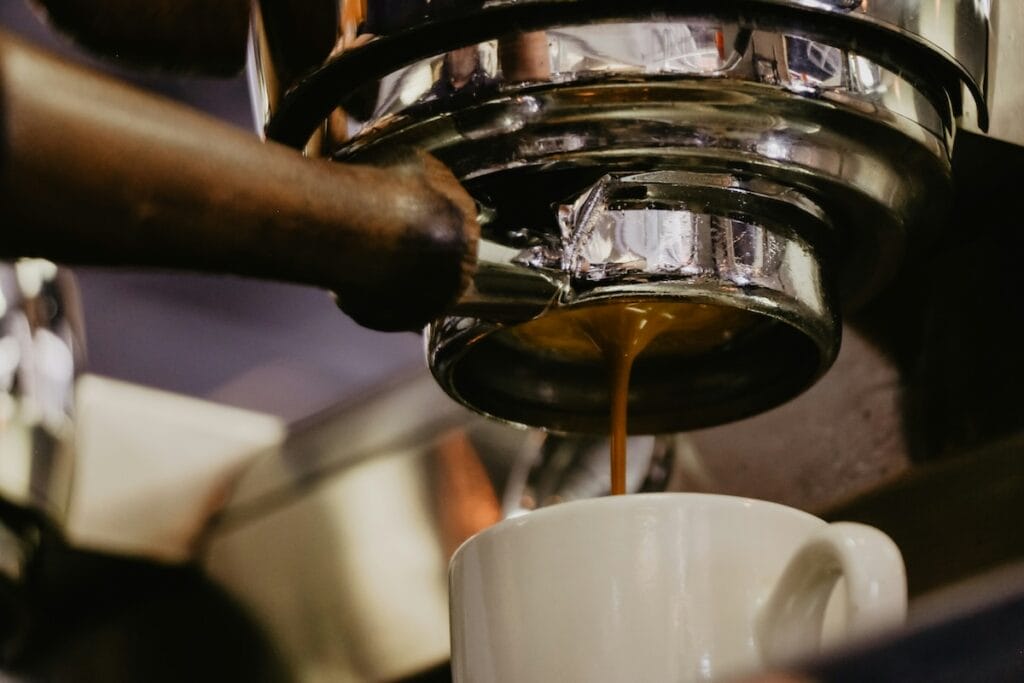
Brace yourself for a bit of confusion.
I’ll provide 2 tables. Each table will provide different caffeine levels (estimates) when using Arabica or Robusta beans.
Here’s Arabica [3]:
| Brewing Method (g/L) | Light Roast | Medium Roast | Dark Roast |
| * Filter Coffee Machine | 0.571 g/L | 0.571 g/L | 0.571 g/L |
| * AeroPress | 0.5 g/L | 0.5 g/L | 0.5 g/L |
| French Press | NA | 1.9 g/L | NA |
| * Cold Brew | 1.25 g/L | 1.25 g/L | 1.25 g/L |
| Espresso (Per 1–2 oz) | NA | NA | 0.41 g/L |
| * Percolator | 1.2 g/L | 1.2 g/L | 1.2 g/L |
* Roast type not specified in study
The actual caffeine content of these drinks will vary. This test was done on beans hailing from various regions.
And here’s Robusta:
| Brewing Method (g/L) | Light Roast | Medium Roast | Dark Roast |
| Filter Coffee Machine | 1.142 g/L | 1.142 g/L | 1.142 g/L |
| AeroPress | 1.0 g/L | 1.0 g/L | 1.0 g/L |
| French Press | NA | 3.8 g/L | NA |
| Cold Brew | 2.5 g/L | 2.5 g/L | 2.5 g/L |
| Espresso (Per 1–2 oz) | NA | NA | 0.82 g/L |
| Percolator | 2.4 g/L | 2.4 g/L | 2.4 g/L |
These are all estimates. As mentioned, the altitude at which the beans are grown, water temperatures, and other factors will determine the caffeine content of your coffee.
I didn’t include Robusta and Arabica blends, which would further complicate the table.
A coffee roast’s caffeine content depends on the coffee bean used.
Bean Type Also Affects Caffeine in Various Roasts
Here’s a breakdown of caffeine in different bean types:
- Robusta: About 5–10 mg per bean.
- Arabica: Around 3–5 mg per bean.
- Excelsa: Around 4–7 mg per bean.
- Liberica: These are less common beans that contain around 1–2 mg of caffeine per bean.
- Peaberry: These single-sided sweet beans typically have 1.42 mg of caffeine per bean [4].
- Maragogype: The “elephant bean” is a variation of Arabica with 2.59 mg of caffeine per bean.
What about espresso beans?
Espresso is a brewing method, not a unique bean type. A roaster can roast any variety of bean (usually Arabica or Robusta) to an espresso level.
Based on this information, what roast type should you go for?
Which Roast Should I Choose?
If caffeine-sensitive, try light roasts or Arabica beans for less caffeine.
Those with moderate sensitivity can enjoy any roast, focusing on shorter brew times.
Darker roasts or Robusta beans are your best bet for a caffeine boost.
Brewing method and serving size influence caffeine intake more than roast level. Or the type of drink you’re buying (in general).
We have a free tool to help you determine whether the drink you’re considering is safe to consume.
References:
- https://www.giesen.com/knowledge-base/drying-phase/
- https://www.batchcoffee.co.uk/stories/how-altitude-affects-the-taste-of-coffee-beans
- https://www.ncbi.nlm.nih.gov/pmc/articles/PMC8228209/
- https://revistia.org/files/articles/ejnm_v4_i1_21/Caracostea.pdf
